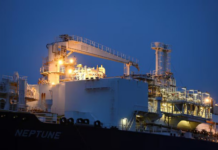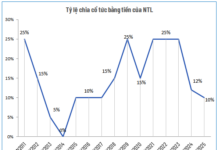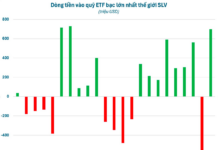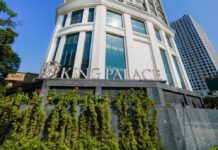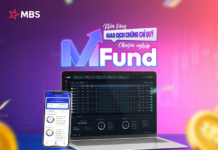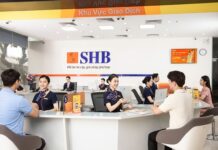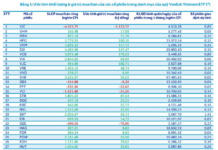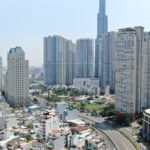The event offered a panoramic view of the market, with a special focus on the banking sector. It also helped investors understand Nam A Bank’s business performance and strategic orientation for the upcoming period.
On this occasion, Nam A Bank representatives provided insights into several key areas of interest to investors. These included information on financial performance, growth prospects, and credit growth orientation; risk management strategy; the “Green – Digital Bank” strategy; the development of the 365+ ONEBANK by Nam A Bank self-service transaction network; positioning the bank and outlining a three- to five-year development plan. …
Stable Growth Across Various Metrics
NAB has achieved growth in its core business operations in 2024. As of August 2024, the bank’s cumulative pre-tax profit reached over 75% of the plan set by the Board of Directors for the year. The ROE ratio currently stands at 21.46%, while the ROA is 1.65%, indicating that the bank has not only grown in scale but also achieved high profitability.
NAB’s NIM ratio has improved to 3.8% (compared to 3.6% at the end of the second quarter). The bank expects the NIM to remain between 3.5% and 3.8% from now until the end of 2024, as interest rates are expected to remain low to support individuals and businesses amid economic challenges.
Operating expenses (CIR) are currently at approximately 38% – a relatively optimal level. According to NAB representatives, the bank aims to be among the top 7-10 banks in Vietnam in terms of salary and welfare to attract talent, along with expanding its network of branches and ONEBANK transaction offices nationwide. NAB continues to invest significantly in technology to increase the technology component in its products and services. Therefore, the CIR target for this phase is set at 40-45% to create a foundation for the bank’s continued growth in the coming years.
In terms of risk management, NAB’s NPL ratio has hovered around the level recorded at the end of the second quarter of 2024. The bank’s leadership has stated that they aim to reduce this ratio to 2% and may increase provisions by an additional VND 300-500 billion to increase the loan loss coverage ratio (LLCR) to 55-60%.
NAB’s loan portfolio has undergone a strategic shift, focusing on priority sectors such as agriculture, forestry, and fisheries (accounting for nearly 6% of the total portfolio at the end of Q2/2024) and smart transportation conversion lending.
In the long term, the bank follows an industry value chain model and aims to expand this model to strategic sectors, including agriculture, forestry, fisheries, education, healthcare, and resorts. For example, in the tea industry, the bank will be involved in every stage, from seedlings and farmers to purchasing enterprises, processing, sales, and exports.
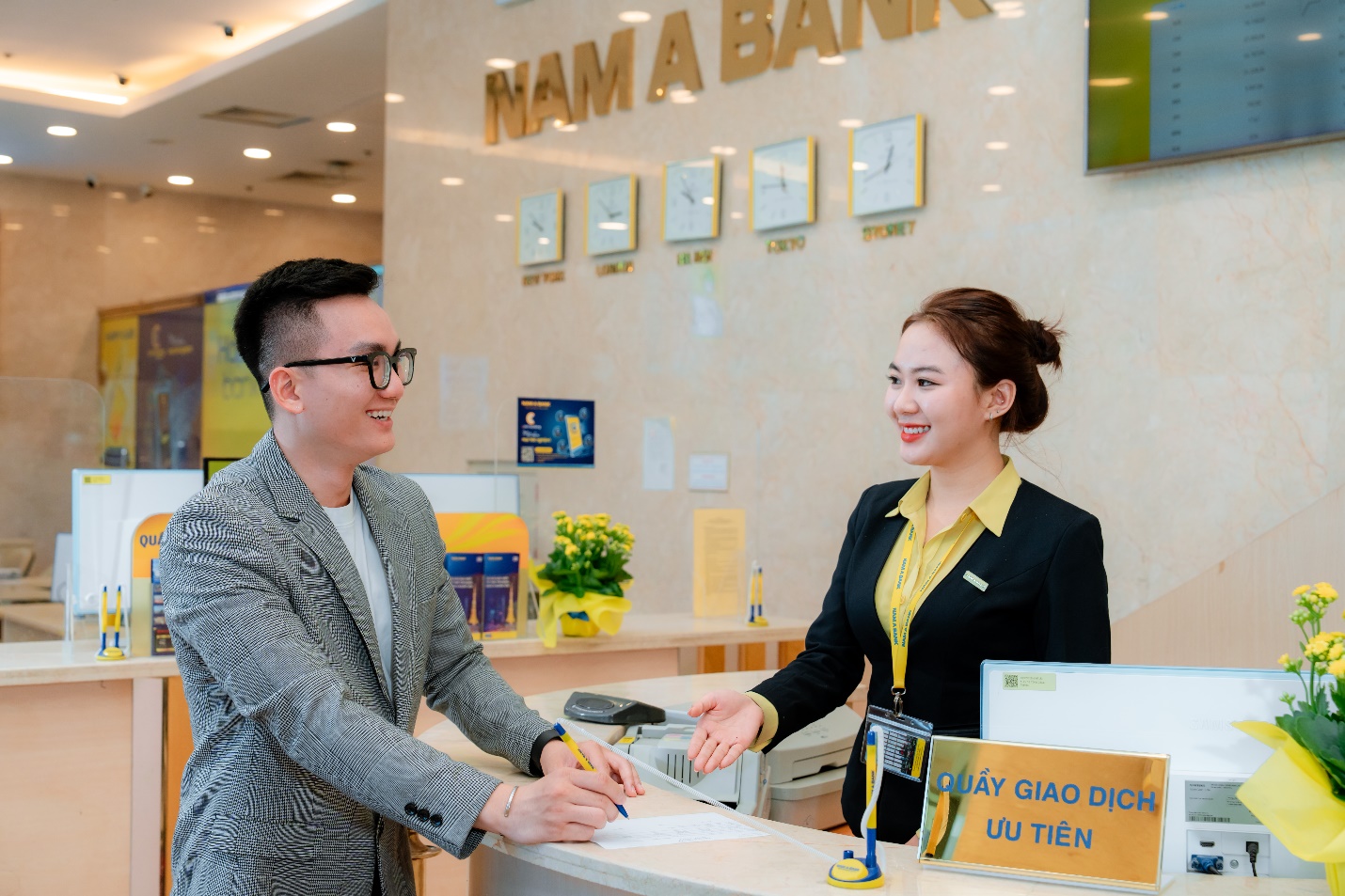
Customers transacting at Nam A Bank
Leading the Way as a “Green and Digital” Bank
NAB has been at the forefront of digital and green banking, as evidenced by the launch and development of the ONEBANK digital financial ecosystem.
Since its inception, ONEBANK has witnessed remarkable growth, with a quarterly growth rate of over 40%, attracting more than 143,000 new customers as of September 2024. The total number of transactions at ONEBANK reached nearly 1.7 million, significantly contributing to NAB’s development in the digital banking sector.
ONEBANK has enabled NAB to expand its customer base and effectively mobilize capital. The total capital mobilized through ONEBANK is nearly VND 10,000 billion (accounting for 6% of the total mobilized capital). With plans to aggressively expand its network, NAB aims to increase the number of ONEBANK transaction points to 130 by the end of 2024, offering convenient and modern digital financial services to individual and corporate customers nationwide.
Additionally, NAB continues to lead in green credit. The bank has implemented a green credit value chain focusing on agriculture, fisheries, and renewable energy. The bank aims to increase the proportion of green credit to 20-25% (twice or three times the current proportion).
The value chain in the fisheries sector is a prime example of the success of this strategy. It encompasses activities from breeding, farming, and processing to exports, all carried out according to international green standards. This not only contributes to environmental protection but also creates long-term economic value for NAB and its customers.
Enhancing Market Position and Seeking Strategic Investors
NAB continues to expand and enhance its position in the financial market, aiming to attract more international strategic investors. Notably, NAB’s foreign room remains relatively low, leaving room for potential strategic capital sales transactions. This will not only help NAB attract additional capital to strengthen its financial position but also expand its international cooperation network, thereby improving its competitiveness in the global market.
Regular investor meetings are an essential activity to provide objective and comprehensive information to customers. In the future, NAB plans to implement various initiatives to promote connectivity and provide quick and transparent information to ensure the interests of domestic and foreign investors.
“Nam A Bank Gears Up for a Strong Finish in 2024 with Virtual Investor Meet-up”
On the afternoon of September 19, Nam A Bank (HOSE: NAB) successfully hosted its Q3 2024 virtual investor meeting, attracting a large number of investors, funds, and securities companies from both domestic and international markets.
The Power of Agricultural Land Ownership: Unlocking Investment Opportunities.
The Ministry of Natural Resources and Environment is currently drafting a resolution to pilot the implementation of commercial housing projects through the transfer of land-use rights.


